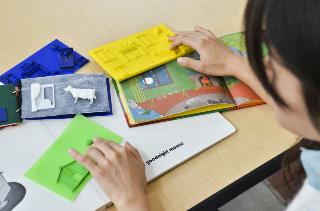
3D"" Braille Children’s Books
Researchers at the University of Colorado at Boulder created a special series of children’s books which, alongside the traditional Braille text, provide raised 3D shapes which children can stroke.
A team of specialists from the University of Colorado at Boulder came up with revolutionary idea for visually impaired children. They created a special series of children’s books which, alongside the traditional Braille text, provide raised 3D shapes which children can stroke. “Each 3D-printing is actually a one-of-a-kind object,” says Dr. Tom Yeh, head of the project. Over the past few months, researchers, using the new technology, worked on printing two children’s classics (“Goodnight Moon” and “The Very Hungry Caterpillar”). Copies of the 3D books were then distributed to children at the Anchor Center for Blind Children in Denver. These books, because of their 3D printing, are rather fragile. However, they offer visually impaired persons the opportunity to “get involved” in the plot of the story in a more entertaining way. As Alice Applebaum, Director of the Center, explains, “Since the children of the Center have limited or no vision, having a book that gives them more stimulation could help give them a better sense what the world looks like.”
Excerpt from the article written by Eirini Veniou and published in Vima Science (14 September 2014)
